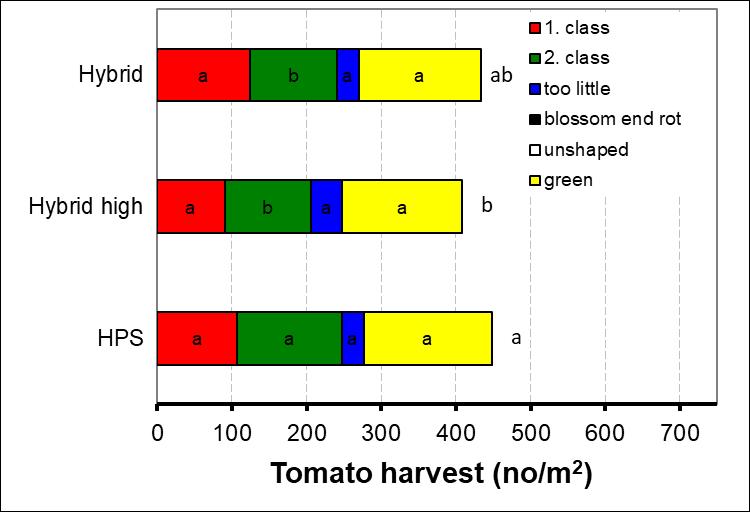
1 minute read
Fig. 24: Cumulative total yield of tomatoes in number
The total amount of fruits harvested was independent of the light source and the height of the lights. While the number of 1. class fruits, too little fruits and green fruits was independent of the light treatment, was the amount of 2. class fruits significantly higher under “HPS” compared to “Hybrid”, whereas the number was not influenced by the height of the lights (Fig. 24).
Fig. 24: Cumulative total yield of tomatoes in number.
Letters indicate significant differences at the end of the experiment (HSD, p ≤ 0,05).
4.3.2 Marketable yield of tomatoes
Plants that received HPS or Hybrid lights, where the distance between light and plants was reduced, started to give red fruits about half a week earlier than plants where Hybrid lights were mounted higher. At the end of the harvest period amounted marketable yield of tomatoes 18-22 kg/m2 (Fig. 25). No significant differences between light sources (“HPS” versus “Hybrid”) were observed, whereas a significantly lower marketable yield was measured when the lights were mounted higher. This difference amounted about 20% less marketable yield at “Hybrid high” compared to “Hybrid”.








